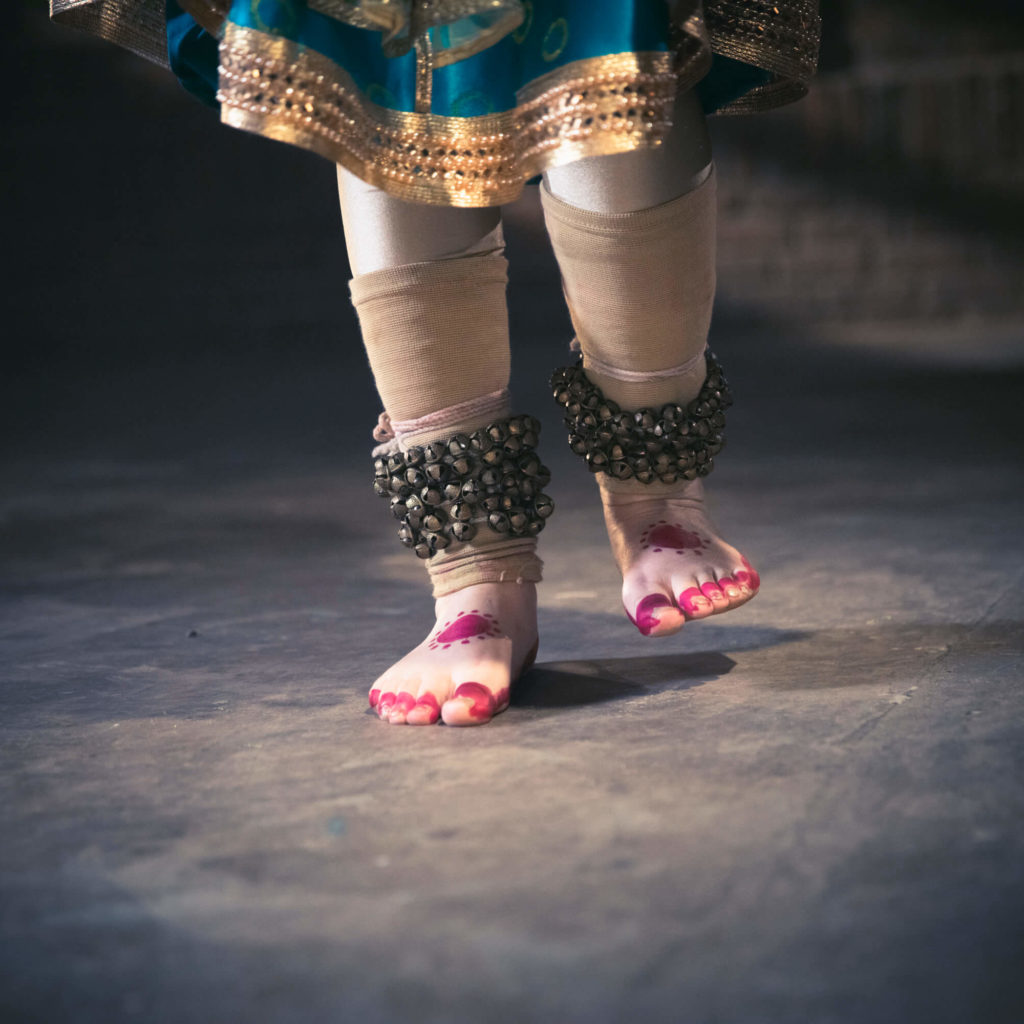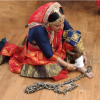GHUNGROOS
Ghungroos are percussion instruments that consist of a string of metallic bells strung together and worn in the form of anklets. Kathak serves as a medium to narrate a story through movements of different parts of the body : eyes, head, hands and feet. While it is easy for an audience to appreciate movements of the eyes, head and hands, distinguishing footwork is harder, since often, the feet are covered by the costume. Hence, the sound produced by the ghungroos is a vital aid.

The Distinctive Ghungroo Sound
Ghungroos are always made of metal to create a distinctive metallic twinkle and ringing sound. The metals used for the outer casing may vary between brass, bronze and silver, which are all considered the most attractive and appropriate materials for creating ghungroos. The inner bead is usually made of iron as it is not visible and hence does not have to have a beautiful look. The sounds also resemble the bells that are found in ancient Hindu temples, and are believed to have a very calming effect on the mind.
Tying Ghungroos
Ghungroos are worn immediately above the ankle, usually over elastic calf pads.Begin by looping the end of the string around your toe, then carefully wrap the bells around your calf, tying the ends with tight knot.


What ghungroos should you buy?
The sounds produced by ghungroos vary greatly in pitch depending on their metallic composition and size. For Kathak, ghungroos should be made of copper and bronze, all bells should be made of the same size, preferably larger bells, and look alike. You must check that your whole set produces a similar sound, to give the best effect when you dance.
How many Ghungroos ?
25-50
A novice dancer will start with around 50 ghungroos per leg. In the case of very young children, 25 ghungroos may be worn.
50-100
100 is the standard amount of ghungroos worn per leg by formally trained dancers with experience.
150+
As a dancer grows older and advances in his or her technical ability, more bells can be added to each leg going up to more than 200 ghungroos per leg. There is no upper limit.
